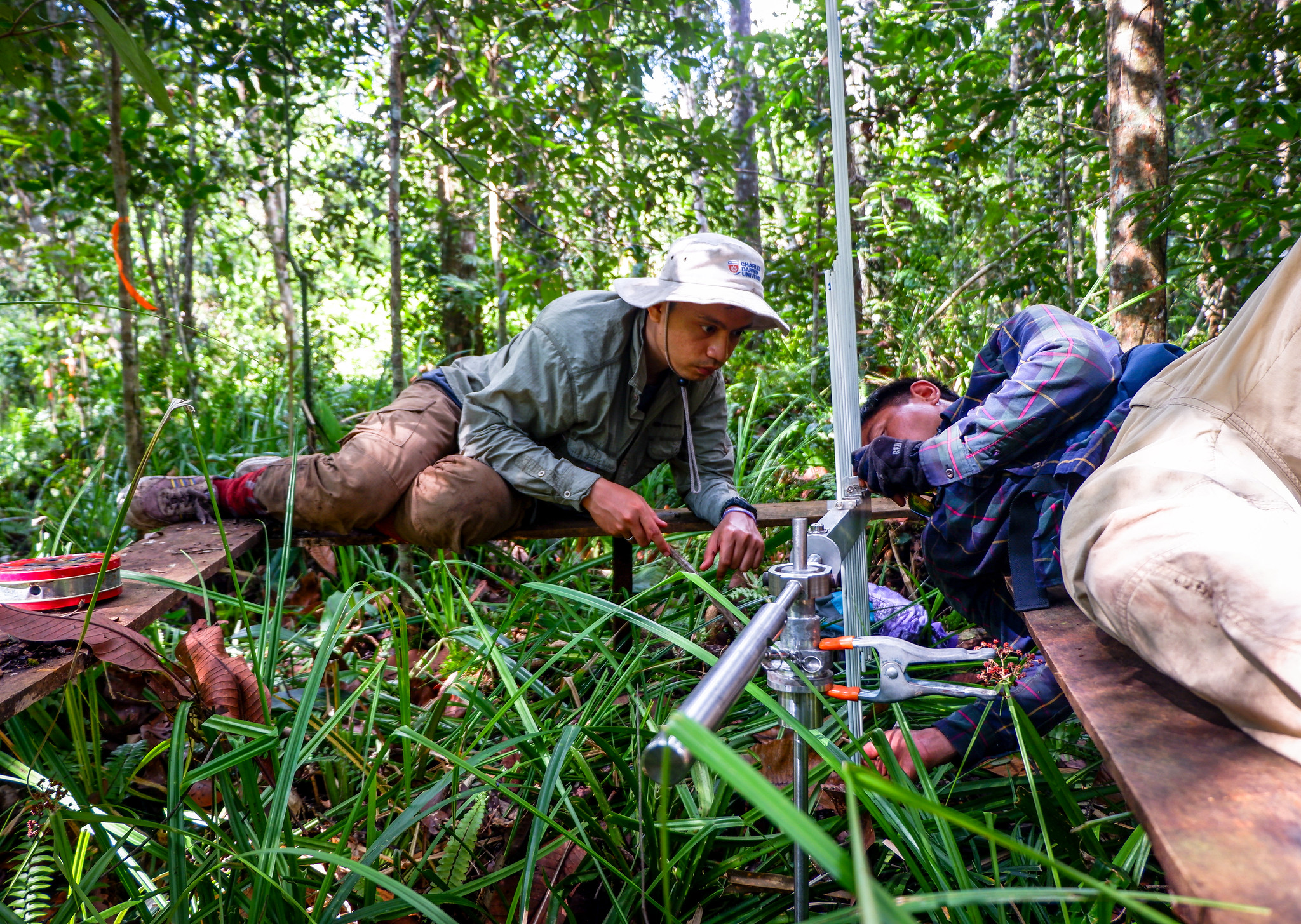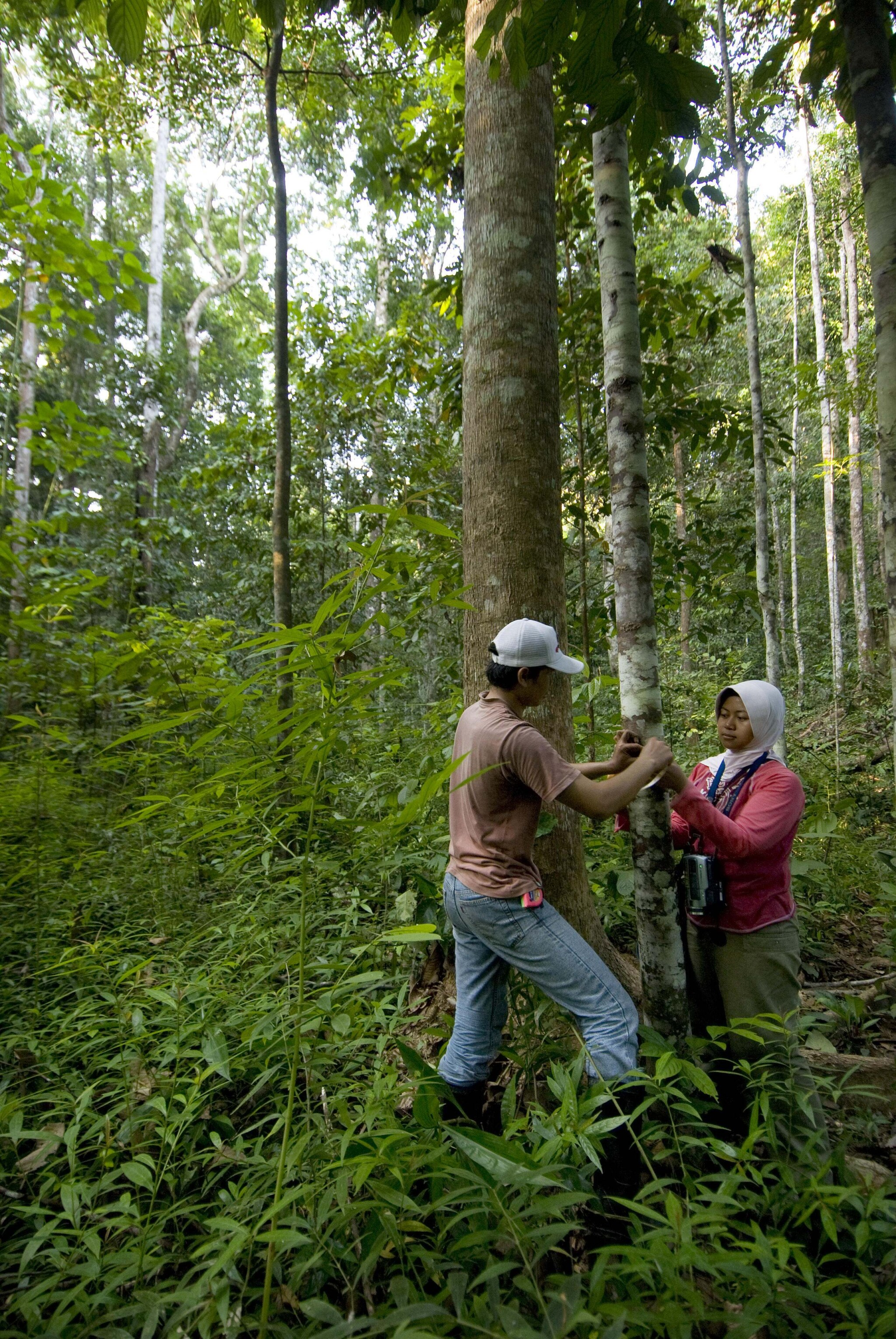Nature-based Solutions FAQ
While efforts to foster the vast range of solutions nature can offer to mitigate global warming and adapt to climate change impacts, it is important to stress that nature-based solutions are not a substitute for decarbonisation efforts in the critical energy transition and that those practices need to be considerate of local context and implement with the highest level of integrity and transparency. In this context, we’ve gathered the most pressing questions to understand what NbS are, what they can do for people and the climate and how they should be delivered.
This page is updated constantly. If you have questions that need answering, send them to NCS@tnc.org.
Jump to section:
The What
What are Nature-based Solutions?
While it is true that often those terms are intertwined, there is a slight division where specific actions regarding climate change, especially mitigation and/or adaptation measures, are in place.
In many circumstances, NbS and NCS are used for the same purpose – to relay meaning on the essential services natural ecosystems provide for the protection of biodiversity, people’s livelihoods and the climate. That means actions that protect, restore and sustainably manage landscapes, providing a range of benefits.
The term Nature-based Solutions (NbS) is broad enough to apply to initiatives that have both climate change mitigation, adaptation and biodiversity conservation as primary objectives, addressing a range of societal challenges from food security to disaster risk, including climate change. Natural Climate Solutions (NCS) is the wording of choice when it comes to having a more focused definition of initiatives that involve the protection, restoration and management that increase carbon storage or avoid greenhouse gas emissions in landscapes and wetlands across the globe.
Nature is a vital part of our ways of living, being intrinsically connected to cultural heritage, economic activities, health, climate and biodiversity. In this context, actions that seek to protect, restore or sustainably manage natural ecosystems could easily be framed as NbS. However, it is important to stress that, in order to be considered a nature-based solution, the initiative needs also to address societal benefits:
- It is NOT a one-fits-all solution – consideration for local context is key for any NbS project, new or existing.
- Ultimately, NbS IS NOT a substitute for rapid decarbonisation – NbS can raise the ambition profile to achieve the climate targets while preserving the natural world and its inhabitants.
Adopting a holistic approach to climate change mitigation and adaptation is always preferred – and nature must be a critical part of it. Protecting natural ecosystems, restoring degraded ones and adopting better practices for sustainable land management are proven solutions that address multiple challenges and result in a positive impact on social, environmental and economic factors.
In addition to potentially removing up to 11Gt of carbon from the atmosphere, nature-based solutions are estimated to have the potential to lift a billion people out of poverty; create 80 million jobs; add an additional $2.3 trillion of growth to the global economy, and also prevent $3.7 trillion of climate change damages. Best of all, they are available to deploy immediately, are scalable and can transform key industry sectors, such as forestry and agriculture. Below are some examples of what they can offer:
- Carbon removal: Natural climate solutions can provide around one-third of the cost-effective climate mitigation needed to keep global temperature rise at or below the 2 degree target stated in the 2016 Paris agreement. By 2030, nature-based solutions across all land-based ecosystems could result in removals of at least 5GtCO2e per year, going up to 11.7GtCO2e. By 2050, this could be between 10-18GtCO2e per year (IUCN and the UN Environment Programme)
- Biodiversity: Conserving and restoring natural lands (and employing more sustainable forestry and agriculture management strategies) will protect native habitats for plants, animals and other organisms.
- Food security: Soil conservation and other agricultural improvements can boost productivity, helping to meet the growing demand for food without expanding the footprint of farming.
- Air and water: Terrestrial and coastal ecosystems play an important role in improving air and water quality and protecting water security. For example, restoring wetlands boosts the land’s ability to filter fresh water. Agricultural practices that improve fertiliser efficiency help protect the water supply from agricultural runoff. Reducing fire-driven deforestation helps keep the air clear and breathable. Protecting forests can even help to restore natural rainfall patterns.
- Economic benefits: Often, people think of climate change mitigation and development as being at odds with one another. In reality, well-crafted development policies and programs can create growth and prosperity while also curbing emissions. Worldwide, some 2 billion people depend directly upon the land and coastal systems for sustenance. Improved farming practices improve their livelihoods, and can revitalize rural communities. Sustainable forestry can have similar benefits for individual incomes and communities. In fact, nature-based solutions are estimated to have the potential to lift a billion people out of poverty; create 80 million jobs; add an additional $2.3 trillion of growth to the global economy, and also prevent $3.7 trillion of climate change damages.
- Indigenous peoples and local communities: Protecting intact habitats can also secure rights for peoples and communities that are originally from there. High-integrity NbS projects are designed and implemented by and with the meaningful participation of local communities, respecting their traditional knowledge and practices. In addition, NbS can support the creation and growth of sustainable economic practices, such as agroforestry, fisheries and conservation works, as well as help communities access direct finance from carbon credits to deploy in well-being initiatives for health, education, local businesses and more.
First, many critics misunderstand NbS and NCS as an alternative for rapid decarbonisation of the energy industry. It is clear that both need to be deployed concomitantly. It is important to understand as well that there is no one-size-fits-all solution. Each initiative needs to be considerate of the local context, those being on the ecological, political and human sides.
Another common misunderstanding regarding NbS relates to the use of the term ‘solutions’ as it lacks recognition of ontological notions of nature, reducing it to a ‘services’ provider – implying that nature is only beneficial in its utility to humans, not necessarily for its own sake. However, the direct involvement of Indigenous Peoples and local communities, as well as consideration for local ecosystems and biodiversity is key to providing a solution that respects ontological notions of nature, including spirituality, traditional practices and natural habitats for wildlife to thrive.
NbS are also sometimes reduced to discussions around offsetting and tree planting schemes leading to monoculture. It is important to note that NbS comprise much more than restoration schemes, with the protection of intact ecosystems and sustainable practices for managing productive lands being amongst the top best solutions for mitigation and adaptation purposes. As for restoration, consideration for native plants and the implementation of comprehensive monitoring and evaluation guidelines, with the participation of local communities, is vital to prevent such problems and ensure long-term positive benefits.
Another point of the question refers to the permanence of sequestered carbon in the soil since events such as fires could result in carbon being re-released into the atmosphere. However this argument fails to recognise the holistic benefits of ecosystem protection and restoration, as well as it reinforced the need for constant monitoring and protection of forests, grasslands and wetlands. Food, health, economy – our whole life system depends on healthy ecosystems. Neglecting such environments due to the possibility of adverse events is bound to cause more problems than solutions, including releasing more of the carbon already sequestered by these ecosystems.
The How
The Science Behind NbS and Climate Action
There are 20 science-backed effective approaches, or pathways, to nurture the best of what nature can do to limit global warming and preserve our natural world. These solutions are a product of a scientific study that considers the world’s different biomes, such as grasslands, wetlands, forests and drylands. See all here.
A carbon sink is anything that absorbs more carbon from the atmosphere than it releases. The ocean, soil and forests are the world’s largest carbon sinks. Carbon sequestration is the removal and storage of carbon from the atmosphere in carbon sinks through geological or biological processes, it slows or reverses atmospheric carbon pollution and mitigates global warming.
Net-zero emissions by 2050 will not be enough to limit rapidly rising temperatures or improve people’s quality of life. Immediate action must also be taken to halt and reverse biodiversity loss while ensuring fair access to natural resources for all. From wetlands and oceans to forests and grasslands, nature is the best and most cost-effective carbon sink. If deployed at scale, Nature-based Solutions could save over 10 Gt of CO2 emissions per year. Protecting, managing and restoring nature can not replace or delay other decarbonization efforts, including rapidly accelerating greenhouse gas emissions reductions.

Carbon Offsetting
NbS, offsetting and carbon markets
Not all natural climate solutions produce carbon credits, and not all carbon credits are natural climate solutions. NCS refers to a whole range of solutions that aim to help absorb CO2 from the atmosphere via natural ecosystems, at the same time as providing ecological and social economic benefits. They can be financed in a number of different ways; carbon markets are simply one mechanism. NCS carbon credits are produced by specific projects or programs that have been created to produce marketable and tradable assets that are intended to allow countries or companies to compensate for the emission of carbon dioxide or other greenhouse gasses elsewhere into the atmosphere.
The VCM is often erroneously conflated with REDD+. REDD+ stands for Reducing Emissions from Deforestation and Forest Degradation, and the “+” symbolizes additional activities related to conservation, sustainable forest management, and enhancement of forest carbon stocks. It defines a system where financial incentives are provided for success in reducing emissions from deforestation and forest degradation, and increasing carbon removals through the “+” activities. (Learn more with our REDD+ Glossary). Although REDD+ activities can generate carbon credits that are sold on the VCM, not all REDD+ activities do, and not all carbon credits are of the REDD+ variety.
If you picture the earth’s atmosphere as a bathtub that is currently filling up with harmful greenhouse gasses, there are two ways to fix this: by reducing the flow into the tub by turning down or shutting off the tap, and by increasing the flow down the drain (removing the plug). So, “reductions” refers to measures to decrease the amount of carbon dioxide (CO2) emissions released into the atmosphere (turning off the tap).
Removals refer to the process of capturing and storing carbon dioxide (CO2) from the atmosphere (pulling out the plug). Removals can be done through technology, with things like Direct Air Capture machines, but in the NCS space, it refers to reforestation and afforestation efforts, because you are creating new carbon sinks that can suck carbon out of the air.
On the other hand, reductions involve preventing carbon that is stored in forests from being released into the atmosphere by stopping deforestation or forest degradation (REDD+). Therefore, credits from reforestation or afforestation projects are often referred to as “removal credits” and credits from forest protection credits are often referred to as “reduction credits”.
While there is not yet a precise definition of “integrity” in the context of the NCS carbon credits, it generally refers to “supply-side” integrity, which considers if a carbon credit truly represents one tonne of emission of CO2e reduction or removal, while also delivering co-benefits; or “demand-side” integrity, which considers how a carbon credit is used by a company as part of a responsible corporate climate action plan.
While there are not yet universally-agreed definitions for either, there are significant industry-wide efforts underway that are improving consensus and alignment. On the supply side, the Integrity Council for the Voluntary Carbon Market has issued Core Carbon Principles that establish baseline criteria for “integrity,” and is currently assessing individual carbon crediting programs and methodologies against these criteria.
In the NCS space, this work is bolstered by initiatives like the Tropical Forest Credit Integrity initiative, an effort of eight leading conservation NGOs and IPLC groups to help companies identify integrity, as well as WBCSD’s NCS Alliance, which has produced a range of helpful guidance materials for companies. On the demand side, the Voluntary Carbon Market Integrity initiative is developing a rulebook on how companies can make voluntary use of carbon credits as part of credible, science-aligned net-zero decarbonization pathways. It builds trust and confidence in how companies engage with the VCM, assisting them in making credible climate claims.
The voluntary carbon market has the potential to fill a significant portion of the funding gap for nature by funding projects and programs that protect, restore and sustainably manage forests and other ecosystems. In 2022, US $200 billion was directed to nature-based solutions, but this must triple to reach US$542 billion per year by 2030 and quadruple to US$737 billion by 2050. A high-integrity voluntary carbon market has the potential to mobilise, at speed and scale, billions of dollars a year in additional climate finance that removes carbon or cuts emissions that help the world stay within the 1.5 degrees C limit of the Paris Agreement, and that benefits communities and ecosystems more broadly.
With high-integrity standards in place, the VCM can also build resilience and transfer wealth to the world’s most vulnerable countries and support sustainable development and the livelihoods of Indigenous peoples and local communities. The value of the global VCM topped $1 billion in 2021 and could be worth between US $5 – 30 billion per year by 2030. Nature-based credits made up 46% of VCM market share in 2022, and credits connected to nature-based solutions were a primary driver of high market value. Perhaps as much as two-thirds of market growth could be channelled into NBS.
Yes, they can, with the appropriate guardrails. To be part of responsible corporate climate action, they must be used in addition to science-based internal emission cuts, rather than a replacement for them. Companies should first set greenhouse gas emission reduction targets consistent with achieving net-zero emissions by 2050, in line with climate science, and develop strategies that prioritize credits only after introducing practices and changes to avoid, minimize, rectify and reduce emissions internally. In these scenarios, the VCM is a valuable decarbonisation tool to support companies on their journey to reach net-zero targets. Carbon credits enable responsible businesses to immediately accelerate their action on climate, and can ultimately support more climate action than a focus on internal emissions reductions alone.

Policy
International Action and Joint Commitments
The Paris Agreement, drafted at the 2015 Conference of the Parties (COP) of the United Nations Framework Convention on Climate Change (UNFCCC), brought together more than 190 countries to draft an agreement to reduce greenhouse gas emissions and respond to the threat of climate change by keeping the global temperature rise below 2°C this century.
NDCs, or Nationally Determined Contributions, are pledges countries developed for the 2015 Paris COP describing methods and targets they will undertake after 2020 to reduce greenhouse gas emissions. Efforts outlined in NDCs are meant to keep the global temperature rise below 2°C this century in as stated in the Paris Agreement.
If a country submitted both an unconditional and a conditional target the number shown represents the unconditional target.
All NDC data presented here relies on a range of assumptions due to the different ways countries have expressed their official NDCs.
For official information on each country’s NDC, please refer to our sources below:


